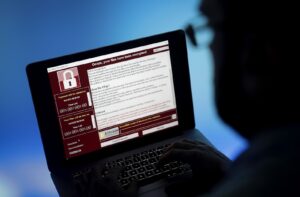The Asia Pacific Computer Emergency Response Team (APCERT) holds annual drills to test and improve the response capabilities of the top Computer Security Incident Response Teams (CSIRT) in the Asia Pacific economies.
Twenty-five from the 21 economies of APCERT participated in the drill, including Australia, which was represented by the Australian Cyber Security Centre (ACSC). The exercise theme was “Data Breach through Security Malpractice” to reflect real-life incidents and issues that threat actors use globally.
APCERT designed this year’s scenario where cybercriminals hostage the systems and data of a leading pharmaceutical company, threatening to release sensitive information, including customer details, onto the dark web.
The drill was organised to promote information sharing and technology exchanges, facilitating the interaction of the different teams locally and internationally to coordinate, mitigate, analyse, notify and provide assistance to the affected entities.
Abigail Bradshaw, Head of the ACSC, saw the similarity of the scenario to the real-life threats ACSC has seen accelerate during the pandemic.
Furthermore, Bradshaw noted, “Ransomware poses one of the most significant threats to Australian organisations, our Annual Cyber Threat Report recorded a 15 per cent increase in ransomware cybercrime in the 2020-21 Financial Year.”
The theme of this year’s drill was integral for the ACSC. The Australian health sector has been named the second highest number of overall cyber security and ransomware-related incidents in the past financial year.
“Activities like the APCERT Drill are an opportunity to collaborate with international partners to help secure cyberspace through cooperation, trust and genuine information sharing.” Bradshaw shares. She also understands that the Australian dependence on digital systems grows and the need to build and test cooperation between members of the cyber security community.
As threat actors continue to rise, the ACSC reminds consumers and businesses to protect themselves by updating device security to protect critical information. Users are also recommended to protect their accounts with multi-factor authentication and ensure that data is regularly backed up in an attack.

More Stories
Killnet and AnonymousSudan Collaborate to Launch Cyber Attacks on Western Organisations
In recent news, it has been reported that two Russia-sympathetic hacktivist groups, Killnet and AnonymousSudan, have allegedly launched a series...
$4000 Gone In An Instant: Mother Defrauded in Facebook Marketplace Car Deal
A mother of four is warning others to be cautious after believing she had purchased a safe and dependable car...
Shocking Scam: Sydney Family Loses $200K Life-Savings in Suncorp Spoofing Fraud
A family from Sydney has lost their life savings worth $200,000 due to a fraudulent scam. Peter and Madison, who...
Mysterious Money Transfer Leaves Couple Speechless: How They Got an Unsolicited $4000
A young couple in Melbourne claims their bank is making up a personal loan they do not understand. Ashley and...
Phishing + AI + Voice Cloning= Big Trouble: The New Way Criminals are Stealing Your Money
New Alert: Criminals use AI and voice cloning to trick you out of your money. Earlier this year, Microsoft unveiled...
‘Impossible to Spot’ Delivery Scam Email Targets Australia Post Customers – Don’t Fall Victim!
Unsuspecting shoppers should be cautious as a parcel delivery scam that is hard to distinguish targets Australia Post customers. Email...


